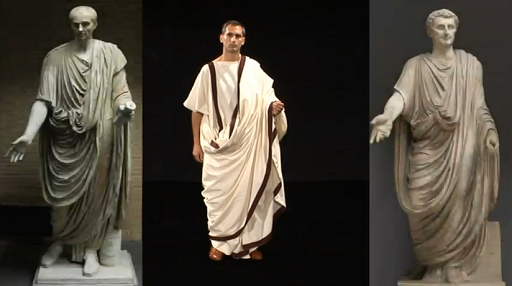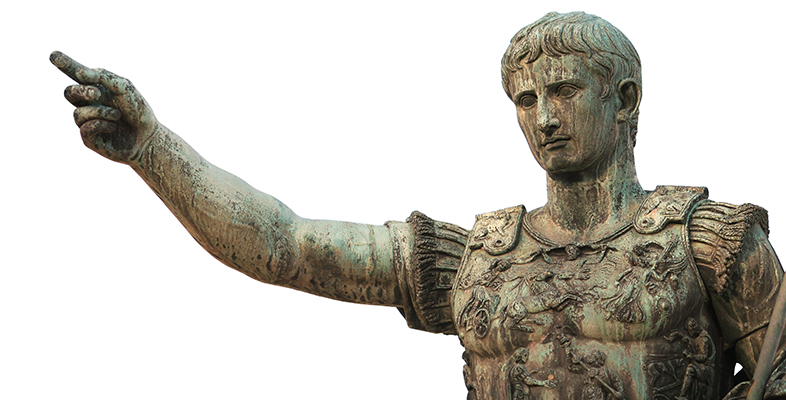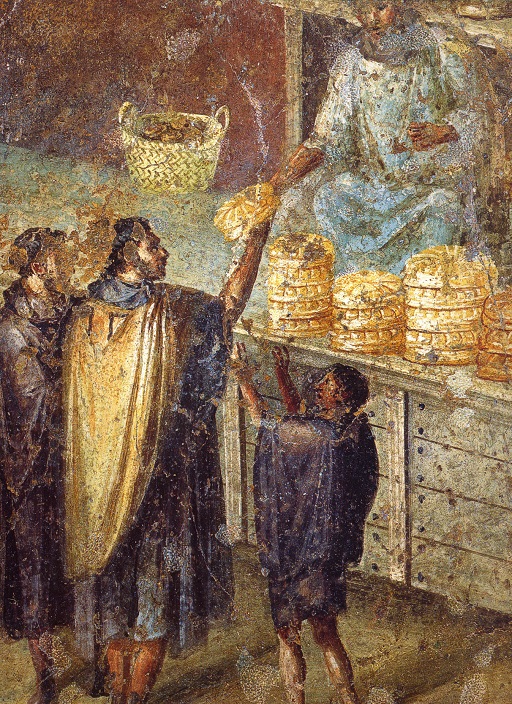3.1 The toga: how it looked
The main garment we tend to associate with Rome today is the toga, and indeed it was the most important symbolic garment of the Roman man. The toga was essentially a huge cloak that was wrapped around the body, usually over a knee-length tunic. It was semi-circular in shape, which gave it a characteristic round hem (setting it apart from other ancient cloaks). By the time of Augustus, it was worn almost exclusively by men. It was very important that the toga was draped correctly, and the styles of draping changed over time.
Activity 2
First, watch the following video on how to drape a toga, taking note of how it is put on and worn. This is a reconstructed toga from the period of Augustus with the draping style of that period (you’ll come back to this shortly).

Then watch the video again, this time making notes to answer the following questions:
- Roughly how big is the toga in the video? What effect do you think this had on what it cost? Can you imagine what a cheaper toga might have looked like?
- How is the toga kept on the body? What kinds of things would you not have been able to do while wearing it?
Discussion
- As you can see in the video, the toga was a massive garment, which would have made it expensive. A toga that was somewhat smaller in size and did not have the second layer of cloth of the toga in this video would have been substantially cheaper, but it still had to be big enough to wrap around the body, and as such will still have been fairly costly. In addition, in order to get the toga onto your body and drape it in the correct way, you needed at least two people to help you.
- The toga is entirely draped: there are no pins, buttons or other fastening aids. As a result, it could easily fall off if its wearer did not sit, walk and gesticulate in certain ways. You could certainly not do anything physically demanding in it, such as manual labour or armed combat.
As a result of its special properties, the toga was, then, the garment worn on an everyday basis only by men who were not involved in manual labour: politicians, lawyers, clerks and businessmen, for example. As it required someone to help put it on, people who wore it on a regular basis would also have normally had household slaves to do this – another expense. Because of its formality, however, it was also the required dress for important formal occasions, like weddings, funerals, court hearings and religious ceremonies. As a result, many artisans and manual labourers will have had a toga stored away for these kinds of events, like many people today have an outfit that they only wear for special occasions.

